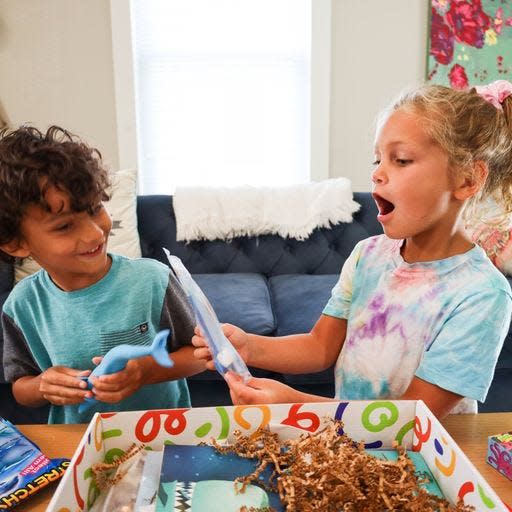Play Matters: What is occupational therapy anyway?
You have just left the pediatrician’s office following your child’s yearly check-up. You and the physician discussed concerns about your child’s overall development. You both agree it may be time to find some outside help. You leave the office with physical, speech, and occupational therapy referrals. And you have more questions now than you did before you even entered the office.

You understand that the PT will help with your child’s mobility. Speech therapy will help with, well, speech! But what in the world is occupational therapy? Do they think your child needs to get a job?
While OT isn’t your child’s fast access to a paying profession, it does have the goal of helping your child be independent and functional in their present stage of life.
For all of us to have as fulfilling a life as we can, we need to have a balance of work, play, and rest. For each life stage, the definition behind each of these changes. A child’s work is to be able to learn and grow from experiences and interactions with those around them. Being able to play freely, cooperatively, independently, creatively, and with structure are all various components that build upon learning. Where does rest come in? Well, if you have helped raise a child, you understand that children need rest. When a child has a tough time balancing or participating in work, play, or rest due to any reason, developmental concerns can arise.
Areas of concern that an occupational therapist might address include your child’s ability to participate in age-appropriate self-care needs such as dressing, bathing, grooming, and eating. Be sure to discuss any behavioral or emotional concerns as well. You should be asked about your child’s investment in age-appropriate toys, interests, peers, and/or family members. How does your child approach a problem? Does he give up easily? Have excessive overreactions or not even notice there is a problem? How does your child respond to senses in her environment? Can he handle the sound of a toilet flushing? Clothing irritants? Crowds? Textures of foods? What about fine motor skills? Does he seem interested in age-appropriate drawing, cutting, or coloring? Do they tire quickly? Avoid playing with interlocking toys such as LEGOs because it is just too hard?
This list may seem vast, and honestly, it really is. Occupational therapists are trained to look at the whole person. Each of us is unique, and the key to unlocking our ability to achieve our full potential is tricky and takes time. If therapy is warranted following your initial appointment, your OT likely will not be able to give you an exact timeline of how long therapy will be recommended. Each child responds differently and has different goals. Each child works on their own timeline.
I believe play is purposeful. Occupational therapy promotes play as an essential portion of development and learning. If you have concerns about your child’s development, do not hesitate to make an appointment with your pediatrician prior to the next planned physical. Early intervention can make a difference!

Connie O’Neill has been a practicing occupational therapist for 30 years. She and her husband have raised four children who have now all entered adulthood. She is the creator of Big Play in a Box, developmentally appropriate items and activities for ages 3 – 8 that cover multiple areas of development and interests. Big Play in a Box offers one-time gift boxes as well as a Premium Quarterly Subscription that shows up at your door filled with therapist-researched activities and the written guidance to help make the most of them. Learn more at bigplayinabox.com.
This article originally appeared on Greenville News: Play Matters: What is occupational therapy anyway?

